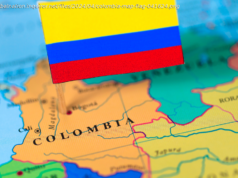Wildlife rehabilitators rescued numerous species after the storm, from common animals like beavers and deer to rarer wildlife like alligator snapping turtles.
When the team at Bat World Sanctuary in Weatherford, Texas, a town about 30 miles west of the Dallas/Ft. Worth area, heard about what was happening to bats as Hurricane Harvey battered Houston, they knew immediately that they had to help.
Bat World Sanctuary’s lead animal caretaker, Erika Quinzel, headed down to Houston with a boat in tow. Her first stop was the parking garage of a skyscraper close to downtown where hundreds of bats had taken refuge from the storm. Bats are small creatures, typically about the size of a hummingbird, and they simply couldn’t fly in the strong winds generated by Hurricane Harvey. By the time Qinzel arrived, the bats were already starving and dehydrated — even in a flood, animals can become dehydrated, because most animals won’t drink flood water.
Amanda Lollar, founder and president of Bat World Sanctuary, estimates that tens of thousands of bats lost their lives during the storm and subsequent flooding. Bats must first drop off of whatever they’re clinging to in order to take flight, but the waters rose so high that many were unable to leave their roosts under bridges. There were bridges that were entirely engulfed by flood waters, where whole colonies drowned. Some that tried to leave their roosts dropped into the water and didn’t make it out. Many of the bats that did manage to fly out from their roosts still ended up in the water.
“It’s the equivalent of a human in a tsunami, it’s inescapable,” Lollar told Mongabay.
All told, Quinzel rescued about 400 bats found in parking garages, clinging to trees, or on the banks of the flooded areas. Some people who had come across injured bats called Quinzel and her team of volunteers, who went and picked the animals up. With the exception of 22 bats that were in critical condition when Quinzel got to them and didn’t make it through their first night under her care, all of the bats rescued by the Bat World Sanctuary team were triaged in the field and eventually released back into the wild. Most of them went right back to their original colony — if their colony had survived.
A wildlife rehabilitator’s job is something like a cross between an emergency medical technician and a veterinarian. “The first thing we do with any animal or bat that needs rehab is assess its condition, look for injuries, rehydrate with subcutaneous fluid,” Lollar said. “We have emergency food, which is basically hydrolized protein so the bats can absorb it readily and it’s almost like instant energy, to get their energy level up and give them the strength to survive. Bats that are in shock are treated differently. Bats that are injured receive pain medication, antibiotics, their wounds are assessed. It just depends, but every bat is examined just like you would examine an animal at a veterinary office, for injuries and illness and treated according to whatever’s wrong.”
It wasn’t just bats that needed saving, of course: Wildlife rehabilitators rescued numerous species after the storm, from common animals like beavers, deer, ducks, opossums, owls, and raccoons to rarer wildlife like alligator snapping turtles and magnificent frigatebirds .
Many of the animals were treated in the field and released, but those that needed more extensive medical attention were taken to wildlife rehab facilities across the state of Texas.
“You know in Houston there’s gonna be a lot of birds,” Michelle Camara, a wildlife rehabber and founder of Southern Wildlife Rehab in San Antonio, TX, told Mongabay. Harvey also happened to hit during baby squirrel season, causing many infant squirrels to be blown out of their nests. “There were hundreds and hundreds of squirrels that got flung all over the place. Maybe 800 squirrels? There were so many that they had to be passed out all the way up to Amarillo,” Camara said.
While numerous wildlife rehabilitators self-deployed to the field in the aftermath of Harvey, going out and patrolling is not how rehabbers usually work. “Generally what happens is somebody calls us, we’re usually listed on a state list. As permitted officers, most states have a list of wildlife rehabbers, to let people know who can legally take wildlife,” Camara said. “You have to have a permit in every state to possess native wildlife. Some places have the people drop them off, some places pick them up, and some places like myself do both.”
Becoming a wildlife rehabilitator requires extensive training and not inconsiderable expenses, and that’s just to get the necessary permit. This makes sense, as permitted wildlife rehabbers are legally allowed to perform surgeries and administer tranquilizers and sedatives. But there’s also vaccinations to be kept up with, especially for rehabbers who work with animals that might be infected with diseases like rabies, which requires them to get pre-exposure shots and, in some states, specialized training for handling disease vectors.
Despite such stringent regulations governing their work, wildlife rehabilitators do not frequently receive much institutional support, from the government or otherwise. Coordination of their efforts — say you’re taking calls but your facility has been damaged by the storm and can’t take in any more animals, or you’ve been called about an injured bat but you specialize in amphibians and reptiles and need to find another facility to take the animal — is frequently done on an ad hoc, interpersonal basis.
Nothing illustrates the dedication of wildlife rehabbers even in the face of the often insufficient support and resources they have to do their job than the fact that, as they braced for Harvey to make landfall, many rehabbers prepared by taking animals home to ride out the storm. “There was a lot of work done before the disaster as we had many animals in our onsite programs as well as our education animals at the center,” Liz Compton, rehab coordinator at the Houston-based TWRC Wildlife Center, told Mongabay. “These animals needed to go home with staff and rehabbers in case the center was flooded or otherwise damaged and/or we could not get to the center to take care of them.”
Unlike neighboring Louisiana, Texas does not have a formal system in place for coordinating wildlife rescue efforts or raising funds for cash-strapped rehabilitation centers. But a number of individuals and groups stepped in to do what they could, even if they were nowhere near Texas.
“In a disaster people find wildlife in need of help — but when the wildlife centers have downed phone lines and no electricity, where do they go?” Kai Williams, executive director of the Portland, Oregon-based International Wildlife Rehabilitation Council (IWRC), asked. “We’ve found that in the hours before the wildlife centers get back online people go to the internet — finding both good and bad information. There have been some great examples during Harvey of the web 2.0 community responding to a disaster — for wildlife this has happened with Reddit and Facebook users who are wildlife rehabilitators from outside the affected area providing auxiliary support to the public.
Start
United States
USA — Events A Look at the Wildlife Rehabilitation Efforts After Hurricane Harvey






